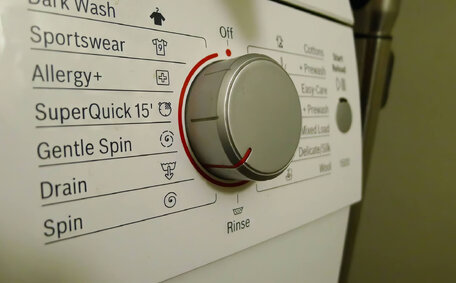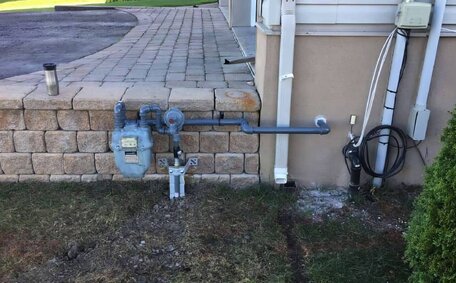Knowing how to safely and promptly cut off gas supply in an emergency situation, such as a gas leak, is a vital safety measure for all homeowners. This guide delineates steps to locate your gas meter and gas shutoff valves, enabling you to halt the flow of gas if a leak or gas odour is detected in your home.
For prompt support at your residence, Padstow Plumbing is equipped to manage all plumbing and natural gas appliance requirements.
Understanding the Risks of Gas Leaks
Gas leaks, which can cause serious safety concerns for your home, particularly during a fire emergency, should always be addressed with utmost urgency. Gas leaks also release toxic fumes, including carbon monoxide which is colourless and odourless. Prolonged exposure to liquid propane gas can lead to carbon monoxide poisoning, resulting in nausea, fainting or even death.
Natural gas is flammable and, being lighter than air, poses an ignition risk from sparks or flames. This puts your home at risk of catastrophic fires or explosions that could destroy property or cause severe injuries. Carbon monoxide is extremely dangerous, even in small quantities, as it prevents blood from carrying oxygen effectively.
Act swiftly to mitigate any suspected gas leaks by promptly activating the gas shut-off valve. This isolates the leak and removes the threat of ignition. Your safety should be the number one priority, and knowing how to stop the flow of gas is key.
Ventilate around gas heaters and stoves if there’s a suspected gas presence to avoid build-up and facilitate dispersion.
Identifying Signs of a Gas Leak
Bubbles in standing water or disrupted water flow may indicate underground gas infiltration. These visible and audible clues prompt the need for immediate action to stop the flow gas.
The most obvious indicator of a compromised gas pipe is detecting a strong 'rotten egg’ smell, as natural gas is odourised for safety reasons.
Remember that the elderly, pregnant women, small children and pets are most vulnerable.
If such symptoms emerge, evacuate the area immediately to prevent carbon monoxide poisoning, with its risks of dizziness, nausea, and fainting.
If a gas leak is suspected, be decisive and prepared to shut off gas supplies without underestimating the potential risks. Being attentive could save lives. Immediately activate the mechanism to shut off your gas and call the service provider if necessary. Rectifying issues early is vital and regular servicing ensures your gas installation remains safe.
Evacuate everyone from the dwelling and call your licensed local gas professionals like Padstow Plumbing to pinpoint leak origins employing sophisticated technology.
What To Do if You Suspect a Gas Leak
If you detect the smell of gas or any other signs of a potential leak, immediate action is critical. The first step is to know where to avoid any source of ignition, including a naked flame, which could ignite the gas. Do not turn any electrical devices or appliances on or off, and refrain from lighting any naked flames or attempting to turn off gas. Next, open all doors and windows to ventilate the area, and if safe to do so, turn off all gas appliances to ensure safety. If it’s safe to do so, activating the valve required to turn off each appliance’s pilot lights prevents further gas flow throughout your home.
Importantly, locate your gas meter gas outside to turn off your gas supply completely, angling the main valve 90 degrees to the ‘off’ horizontal position. This will isolate the leak by shutting the meter off, cutting the gas supply to your entire home. If you’re unable to access your gas meter, evacuate everyone from the entire house and reach out to your local gas company or contact emergency services on 000.
Provide your contact details, including an email address, and describe the location and specifics of the suspected gas leak.
Do not re-enter or reactivate the gas before a licensed gasfitter from Padstow Plumbing confirms safety. As gas fitting specialists, we have the tools and expertise to handle emergency call outs promptly and resolve issues appropriately.
Locating the Gas Meter Outside Your Home
Most homes have the gas meter, required for gas shutoff, on the side of the house, usually near the front boundary or mounted on an external wall. The valve typically resides within a grey box marked 'Gas Meter’, through which gas pipes run. The box, which you can only access during specific situations, will be clearly labelled "Gas Metre" and display emergency contact numbers.
Australian Gas Networks has recommendations on our website emphasising the importance of maintaining at least one metre of clear space on all sides of your meter.
Ensure to eliminate tripping hazards. Overgrown vegetation can also pose fire risks.
The shutoff valve, indicated by a yellow handle, turns 90 degrees horizontally to stop the gas flow.
In times of crisis, understanding the process of turning gas sources off can be the difference between safety and calamity.
How To Safely Shut Off the Gas Supply
To execute an emergency gas shut-off, first identify your outdoor gas meter within a metal box, usually near the front boundary or affixed to an exterior wall.
Stand facing the box’s valve handle, with the gas pipes entering to your left. The shutoff valves, marked by a yellow handle, are positioned vertically inside the box. This is the main shutoff valve.
Grip the yellow handle securely with both hands, as it might be stiff if unused for some time. Turn the gas 90 degrees in a clockwise direction so the handle sits in a horizontal position across the piping. You may hear a light hissing noise as the remaining gas flowing in the pipes vents out.
This action decisively cuts off your natural gas supply for your safety. Maintain the main valve in the shut position for 30 seconds to effectively isolate the leak.
If a gas odour persists or the leak continues post main valve closure, evacuate your home immediately and contact the emergency number 1800 427 for gas leaks. Provide details of the leak and your address. Do not re-enter until gas fitters confirm it’s safe to do so.
Ventilating the Area After Shut Off
After you turn your gas off during an emergency, it is crucial to properly ventilate the area to allow any residual fumes to dissipate. If safe to do so, you can also turn on exhaust fans in bathrooms and over the stove to actively draw out any gas.
If you still detect gas, do not re-enter or turn the supply back on.
Check thoroughly for any lingering gas smell, listening closely for hissing sounds.
Once the area smells fresh and signs of leaking cease, it’s imperative to switch off all gas devices before a thorough inspection. Take gas safety seriously by keeping access to your metre clear and learning how to respond in emergencies.
Make sure to contact your Padstow Plumbing experts afterward to rectify the source of the leak appropriately. Be prepared, not scared, with the right knowledge.
When To Call the Professionals
Although this guide offers emergency gas shut-off instructions, certain situations necessitate immediate professional intervention. Should accessing the gas meter be unsafe, odours persist following main valve closure, or physical limitations impede supply disconnection, vacate the premises and summon a licensed gas fitter or emergency services immediately.
If unsure about handling the situation or unqualified, enlist licensed gas professionals rather than attempting DIY repairs.
Gas systems are intricate and leak-prone, potentially worsened by incorrect handling.
Contacting skilled professionals with specialized equipment mitigates the risks associated with gas systems. Don’t delay in seeking help even for minor leaks. Our responsive emergency call-outs across Padstow aim to secure homes, avoid disasters and restore gas supply safely. Trust our reliable services when faced with gas leaks or malfunctions.
Gas Safety Tips
Home gas safety demands strict compliance with best practices. Consistently monitor your gas appliances for abnormal sounds, smells, or performance issues and promptly address any concerns. These safety mechanisms automatically shuts off the gas flow if leaks are detected.
Ensure licenced technicians service your home’s gas appliances and pilot lights, examining for wear and leaks. Ascertain that the spaces encompassing gas pipes, metres, regulators, and appliances are devoid of blockages and potential fire starters. To fortify preventions, equip gas conduits leading to areas bearing open flames, such as your kitchen, with a safety shutoff valve.
Conduct regular inspections on your appliances to ensure that any flexible connections are crack-free.






